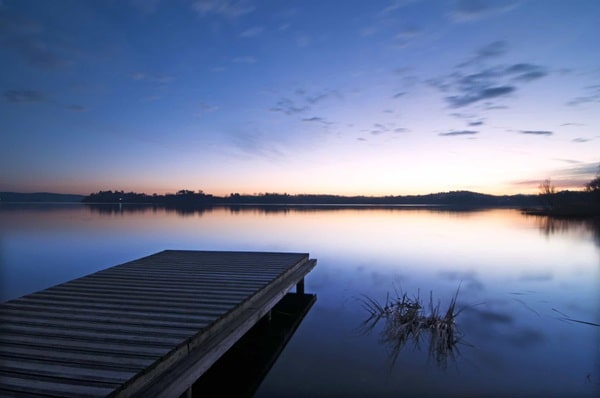A dock over a lake is not just a utilitarian one. It is where families incorporate, boats are tied up and day after day access to the water is facilitated. With time, though, heavy use with a variation in water levels can undermine even the most solid dock. Your dock might not only be rendered to be unsafe, but it might need expensive repairs or replacement in a shorter time than you had anticipated without proper reinforcement.
Strengthening a dock is a matter of compromising durability, safety and adaptability. Be it boating or swimming or installing an addition like a kayak launch dock, proactive action will guarantee that your dock will hold up in years of seasonal change. It is possible to have a well-constructed and stable structure with proper planning and materials which will persist in addressing your requirements.

Understanding Dock Stress
The continuous stress on the boards, pilings and fasteners of a dock occurs due to heavy usage. Wear and tear are caused by every single step, every load of boating equipment, and every motion of water. The lack of reinforcement may cause the boards to loosen, the pilings may move, and the hardware may rot, and your dock can be left unstable.
There is additional stress due to water levels. Lakes and rivers tend to be seasonal and the high and low of water against the structure may lead to erosion round pilings and distortion of decking. When you are in areas that experience the formation of ice in winter, the effects of freezing and thawing are aggravated by these processes, making a need, not an option, to reinforce.
Determining Structural Weakness
The initial process of strengthening a dock is to examine it thoroughly. Check the screws, deteriorating boards or moving support posts. A crack in a piece of wood or rust on metal fittings may mean more serious problems at the back. By handling these early, greater harm will be avoided in the future.
It may also be worthwhile to have professional inspections done especially when your dock is old or in the case they have heavy machinery like a boat house cable lift Muskoka. Experts have the ability to notice the problems that are not easily seen and advise on the appropriate measures to reinforce your particular shoreline environment.
Selection Of Stronger Materials
The selection of materials when reinforcing or renovating is here to stay. The lumber is treated under pressure, composite decking is introduced and so are galvanized or stainless steel fasteners which give stronger resistance to rot, corrosion and shifting. This upgrade on these materials will help to prevent the recurrent use of your dock.
The popularity of composite decking has been due to low maintenance and water resistance. It can be pricier in the short term, but in most cases the cost is offset by its resistance to alterations in the water level which makes it less likely to require repairs. Reinforcing the structure to make it stable over the long term involves investing in better quality of materials.
Strengthening The Support Structures
Your dock has a support system which is the base and the reinforcement of this area is important. The substitution of spoiled pilings with steel or concrete substitutes develops a firmer foundation that is not as vulnerable to erosion and compressed soils. Even weight distribution may also be ensured by bracing between pilings and stress during heavy usage lowered.
Another alternative that can be used in the locations where the water level is erratic is floating dock systems. They move up and down with the water, therefore, minimizing the load on stationary supports. But when strengthening floating docks, one must assure the floats are whole, well-sealed, and firmly fixed in place to avoid being separated by pressure.
Enhancing Connections And Fasteners
The failure of fasteners usually precedes the failure of boards or pilings, hence their upgrade is a necessary procedure of reinforcement. Stainless steel bolts, screws and brackets are much more resistant to moisture and rust as compared to ordinary hardware. Tightening/changing the old fasteners keeps the dock firm when it is constantly under use.
Relationships between decking and supports, also, should be strengthened. By adding more brackets or cross braces, the shifting is minimized and allows the dock to accommodate heavier loads like people in a group, boating equipment or water pressure around the seasons. Enhanced links eventually enhance the safety and life of the dock.
Preparation During Water Level Changes
A dock which is unable to adjust to the water level will rapidly deteriorate. Dock legs can be adjusted up and down or have detachable sections so that the owner can adjust the platform to suit seasonal changes. This flexibility ensures that it is not damaged by submersion or over-exposure and can be used all year round.
It is easier to accommodate changes by installing features that are intended to be flexible e.g. ramps or floating extensions. As an illustration, you can match a reinforced dock with a kayak launch dock and safely move on water irrespective of any change in level without any undue pressure on the main structure.
Other Protective Features To Consider
Other than reinforcements, protection features can be added to help minimize long term wear. Boat bumpers, edge guards, and rubber fenders reduce the effects of frequent docking of boats. These are safeguard mechanisms that cushion the impact instead of directly passing on the impact to the frame of the dock.
Strong water movement could also be defended by the use of wave attenuators or breakwaters. This lowers the force of waves or energy on the dock itself, which enhances pilot stability and minimizes erosion at the base. These features provide a comprehensive solution when they are used with reinforcement strategies.
Long Term Results Maintenance
Reinforcement is not a one time undertaking. It is important that your dock is maintained on a regular basis. The long term durability is achieved by cleaning up debris, inspecting possible damage and tightening fasteners. Minor repairs will help avoid major ones, but small repairs need to be done regularly.
It is also important to prepare seasonally. All the protection of the dock consists of removing accessories in advance of winter, inspecting supports after thawing down in the winter, and providing drainage round pilings. The maintenance that you have included in your reinforcement plan is what protects your investment and increases the life of the structure.
Conclusion
A dock that will be reinforced under heavy use and change in water levels should be done with attention to detail and passion towards quality. Since the selection of strong material stems from reinforcement of supports and fasteners, all the enhancements of the structure are made more resilient to the pressure posed by people and nature. Flexibility and regularity and maintenance also will guarantee the dock is safe and operational during the seasons.
No matter what you are going to use your dock to do in terms of daily swimming, boating, or any other specialized equipment, proper reinforcement will safeguard the structure and the people who need it. Reinforced dock does not only resist varying water levels, but also ensures a safe and pleasant recreational and relaxation area in the future.

